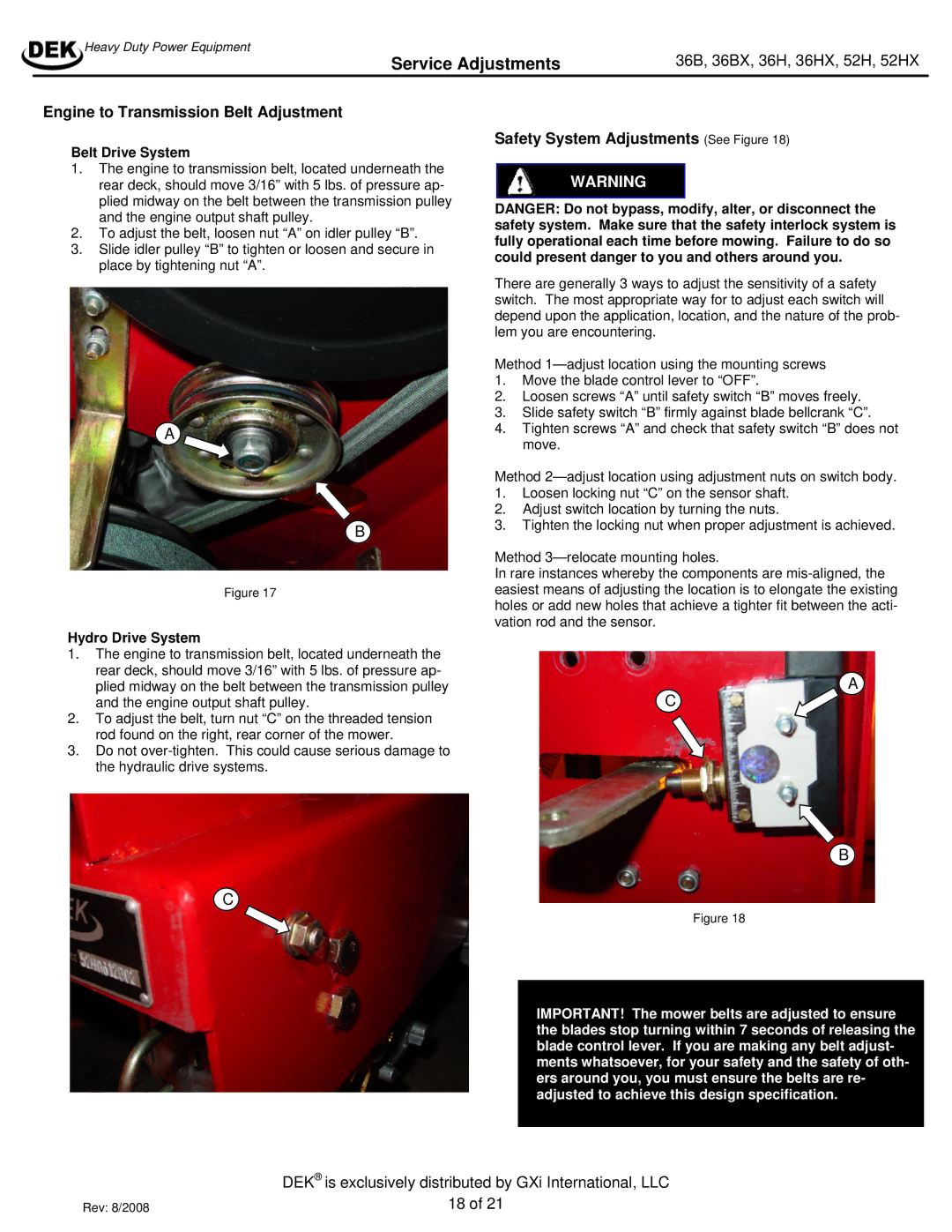36B, 36H, 52H, 36BX, 36HX specifications
The Dekko series, including models 36HX, 36BX, 52H, 36H, and 36B, represents a significant innovation in the realm of high-performance machinery. These models are designed specifically to enhance productivity while ensuring user-friendly operation, making them suitable for a wide range of industrial applications.One of the key features of the Dekko 36HX is its robust design combined with advanced automation technologies. This model is equipped with high torque motors that provide exceptional power and efficiency. The 36BX model complements this with its unique ability to handle a variety of materials, making it a versatile choice for any workshop or manufacturing floor. Both models prioritize safety, incorporating automatic shut-off systems that protect operators during sudden power fluctuations.
The Dekko 52H stands out with its larger capacity, making it ideal for heavy-duty applications. Its precision engineering allows for high-speed operations while maintaining accuracy, a critical requirement in industries where minute tolerances are crucial. Additionally, it features an intuitive digital interface that assists operators in monitoring performance metrics and operational parameters in real time.
Conversely, the Dekko 36H and 36B models focus on compactness and space efficiency without sacrificing performance. These models are particularly suited for smaller operations or workshops where floor space is limited. Despite their size, they incorporate powerful motors and are engineered for durability, ensuring long-lasting service even under demanding conditions.
All models in the Dekko series employ innovative cooling technologies that prevent overheating during extended operations, thereby prolonging the lifespan of the equipment. Furthermore, they are built with eco-friendly materials and energy-efficient designs, aligning with modern sustainability goals.
In terms of user experience, the Dekko series offers easy maintenance features that reduce downtime. Key components are easily accessible, allowing operators to conduct regular checks and replacements with minimal effort.
In conclusion, the Dekko 36HX, 36BX, 52H, 36H, and 36B embody a perfect blend of strength, precision, and technology. Their unique features and characteristics cater to diverse industrial needs, making them a valuable investment for any business aiming to enhance operational efficiency and productivity. With their commitment to innovation and sustainability, the Dekko series is positioned to lead the market for high-performance machinery in the coming years.

